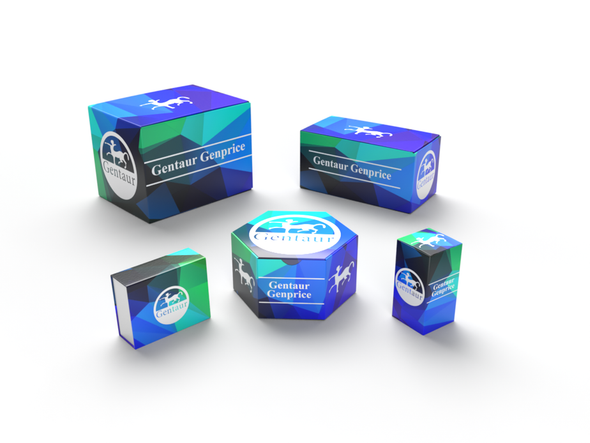Description
PTTG1 Antibody | 62-848 | Gentaur UK, US & Europe Distribution
Host: Rabbit
Reactivity: Human
Homology: N/A
Immunogen: This PTTG1 antibody is generated from rabbits immunized with a KLH conjugated synthetic peptide between 16-45 amino acids from the N-terminal region of human PTTG1.
Research Area: Cancer, Cell Cycle
Tested Application: WB, IHC-P, IF
Application: For WB starting dilution is: 1:500
For IF starting dilution is: 1:100
For IHC-P starting dilution is: 1:50~100
Specificiy: N/A
Positive Control 1: N/A
Positive Control 2: N/A
Positive Control 3: N/A
Positive Control 4: N/A
Positive Control 5: N/A
Positive Control 6: N/A
Molecular Weight: 22 kDa
Validation: N/A
Isoform: N/A
Purification: This antibody is prepared by Saturated Ammonium Sulfate (SAS) precipitation followed by dialysis
Clonality: Polyclonal
Clone: N/A
Isotype: Rabbit Ig
Conjugate: Unconjugated
Physical State: Liquid
Buffer: Supplied in PBS with 0.09% (W/V) sodium azide.
Concentration: batch dependent
Storage Condition: Store at 4˚C for three months and -20˚C, stable for up to one year. As with all antibodies care should be taken to avoid repeated freeze thaw cycles. Antibodies should not be exposed to prolonged high temperatures.
Alternate Name: Securin, Esp1-associated protein, Pituitary tumor-transforming gene 1 protein, Tumor-transforming protein 1, hPTTG, PTTG1, EAP1, PTTG, TUTR1
User Note: Optimal dilutions for each application to be determined by the researcher.
BACKGROUND: PTTG1 is a homolog of yeast securin proteins, which prevent separins from promoting sister chromatid separation. It is an anaphase-promoting complex (APC) substrate that associates with a separin until activation of the APC. The protein has transforming activity in vitro and tumorigenic activity in vivo, and is highly expressed in various tumors. This protein contains 2 PXXP motifs, which are required for its transforming and tumorigenic activities, as well as for its stimulation of basic fibroblast growth factor expression. It also contains a destruction box (D box) that is required for its degradation by the APC. The acidic C-terminal region of the protein can act as a transactivation domain. It is mainly a cytosolic protein, although it partially localizes in the nucleus.






